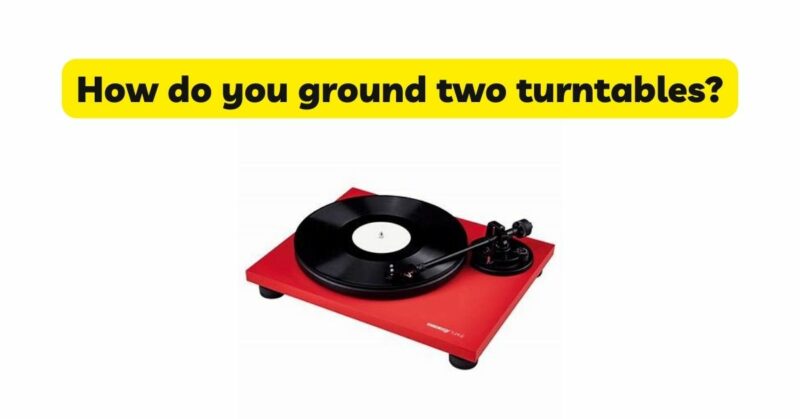Grounding is an essential aspect of audio equipment setup, particularly when it comes to turntables. Proper grounding helps minimize unwanted noise, hum, and interference in the audio signal, ensuring optimal sound quality and performance. In this article, we will provide a comprehensive guide on how to ground two turntables effectively, covering the necessary steps, considerations, and troubleshooting tips for a seamless and enjoyable audio experience.
Understanding Grounding in Turntables:
Grounding in turntables involves creating an electrical connection between the turntable’s metal chassis and the ground reference in the audio system. This connection serves two primary purposes: to reduce electrical noise and to provide a safety measure by preventing electrical shock. Grounding eliminates potential differences in electrical potential between the turntable and other audio components, which can cause unwanted hum and interference.
Steps to Ground Two Turntables:
To ground two turntables effectively, follow these steps:
- Identify Grounding Points: Locate the grounding points on each turntable. Most turntables have a grounding post or terminal located on the rear panel. The grounding post is typically a metal screw or terminal that connects to the turntable’s metal chassis.
- Connect Ground Wires: Obtain a separate ground wire for each turntable. Ground wires are typically included with turntables, but if not, they can be purchased separately. The ground wire should have a spade connector or a fork connector on one end and a spade or ring connector on the other end.
a. Insert the spade connector or fork connector on one end of the ground wire into the grounding post of the first turntable. b. Connect the other end of the ground wire to a suitable grounding point. This can be the grounding terminal on an amplifier or preamp, a dedicated grounding strip, or any available grounding point on the audio system.
Repeat the above steps for the second turntable, connecting its ground wire to the respective grounding post and grounding point.
- Ensuring Solid Connections: Ensure that the connections are tight and secure. Loose connections can result in poor grounding and potential noise issues. Verify that the ground wire is securely connected to both the turntable’s grounding post and the grounding point in the audio system.
- Troubleshooting Grounding Issues: If you encounter any grounding issues, such as persistent hum or noise, consider the following troubleshooting tips:
a. Check the integrity of the ground wire. Ensure it is not damaged or frayed. b. Verify that the grounding posts on the turntables are clean and free from any corrosion or oxidation. Clean them if necessary using a contact cleaner or a gentle abrasive pad. c. Confirm that the grounding point in the audio system is properly grounded. You can use a multimeter to check for continuity between the grounding point and a known ground. d. Experiment with different grounding points. Sometimes, the grounding point you initially selected may not provide optimal results. Try connecting the ground wire to a different grounding point on the audio system.
- Additional Considerations: Keep the following considerations in mind when grounding two turntables:
a. Separate Ground Wires: It is essential to use separate ground wires for each turntable to avoid potential ground loop issues and interference between the two turntables. b. Quality of Grounding Wire: Ensure that the grounding wires are of good quality and have a solid, reliable connection. Poor-quality wires can introduce additional noise or signal degradation. c. Grounding in Multi-Component Systems: If you have multiple audio components in your setup, ensure that all components, including the amplifier or receiver, are properly grounded to the same grounding point.
Conclusion:
Proper grounding is crucial for minimizing noise, hum, and interference in audio systems, particularly when using turntables. By following the steps outlined in this guide, you can effectively ground two turntables, ensuring optimal sound quality and performance. Remember to identify the grounding points on each turntable, connect separate ground wires, and establish secure connections to suitable grounding points in the audio system. If you encounter any grounding issues, refer to the troubleshooting tips provided and consider experimenting with different grounding points. With proper grounding, you can enjoy a clean and immersive audio experience from your turntables, free from unwanted noise and interference.


